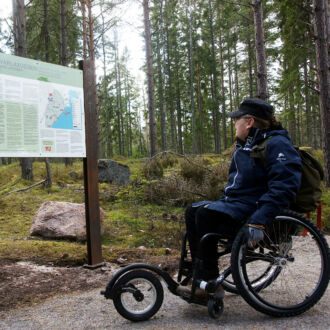Here’s our field guide to the fascinating mythical creatures that might still be lurking out there in Finland’s vast forests, or in the dark depths of a remote lake.
Every country’s mythology has its own cast of strange creatures, monsters and legendary human figures. Finland is no exception, and mythical creatures remained very much part of Finnish folklore until the country’s rapid urbanisation during the 20th century.
Many fabulous Finnish figures appear in the runic poems of the Kalevala – the national folk epic compiled in the 19th century by Elias Lönnrot. Finnish kids today are still familiar with the sanitised versions of such characters featured in modern children’s books and TV programmes. In the old days, many of these potentially dangerous creatures were very useful to parents of over-active children! More recently, author Johanna Sinisalo won the coveted Finlandia Prize in 2000 with a book about a troll, published in the US as Troll: A Love Story and in the UK as Not before Sundown.
And now let’s meet the mythical, often untranslatable creatures that have yet to be disproven. They are notoriously camera shy, and our photographers are also afraid to take the job (although they refuse to admit it), so we bring you illustrations instead. Maybe our guide will inspire you to go on a creature-spotting expedition – tread carefully.
Peikko
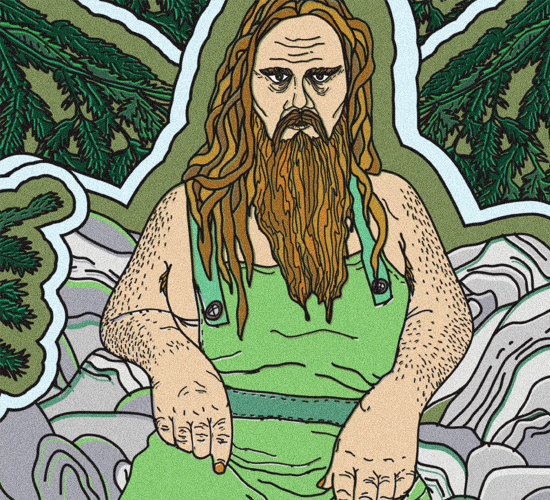
Appearance: Ranges in size from small to enormous. Hairy, with large nose and ears.
Habitat: Dark forests and rocky ridges
Behaviour: Slow, stupid and lazy. May turn into rocky landscape features for long periods, even centuries. Some individuals are aggressive and may kidnap children who stray too far from home. Children today fear the invisible Hammaspeikko, who secretively makes holes in their teeth. Another invisible subspecies, the Känkkäränkkä, still sometimes makes children fight, sulk or do other things that displease their parents.
Relatives in other mythologies: Scandinavian trolls, giants, goblins
Iku-Turso, or Tursas

Appearance: Seriously scary. This gargantuan creature from the deep resembles a giant, fierce octopus, with long tentacles and suckers. May also sprout dragon-like wings.
Habitat: Baltic Sea and large lakes
Behaviour: Solitary. Dangerously aggressive if disturbed.
Relatives in other mythologies: kraken, sea serpent, Loch Ness monster
Keiju
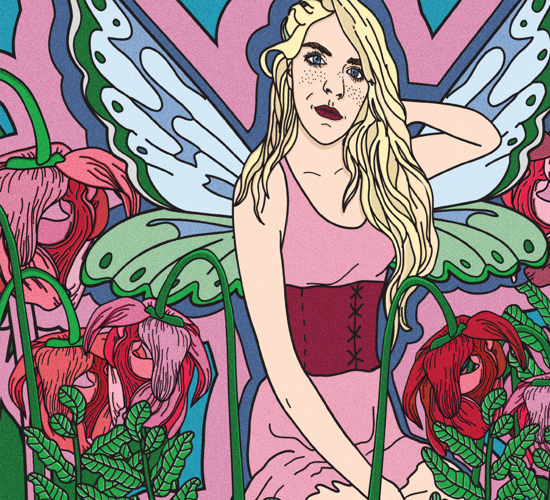
Appearance: Beautiful creature like a small human, but with wings like those of a dragonfly or butterfly.
Habitat: Ponds deep in the forest, and misty meadows
Behaviour: Usually avoids people, but friendly if encountered accidentally. Loves to dance and socialise. Lives in a parallel ideal world of peace and harmony.
Relatives in other mythologies: fairies, sprites
Menninkäinen
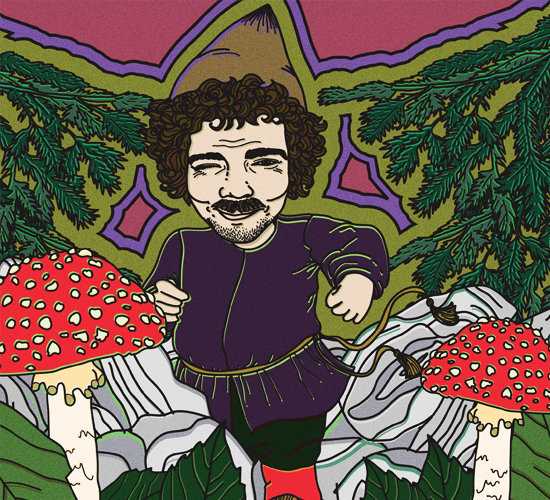
Appearance: Small, human-like. Large head with pointed features. Often wears a pointed hat.
Habitat: Lives underground in remote forests, but may approach human settlements out of curiosity.
Behaviour: Nocturnal* and often timid. Usually friendly if approached carefully, but may trick children by leading them astray if they wander too far into the forest! Playful and likes to dance. Intelligent, and enjoys riddles. Likes to seek out shiny objects.
Relatives in other mythologies: gnomes, goblins, leprechauns, imps
* A well-loved Finnish romantic song from the 1940s, “Päivänsäde ja menninkäinen,” describes a chance meeting between a darkness-loving menninkäinen and a sunbeam.
Näkki

Appearance: May appear friendly and alluring at first sight, but eventually reveals true appearance: horribly hairy and/or scaly
Habitat: Murky pools, especially under bridges, sometimes found in springs or wells.
Behaviour: May try to tempt children to come near the water, and then pull them in to drown them (a very useful spirit for nervous parents of accident-prone kids). Can also drown children who swim into deep water.
Relatives in other mythologies: water spirit, siren, vodyanoy (found in Russia)
Hiisi
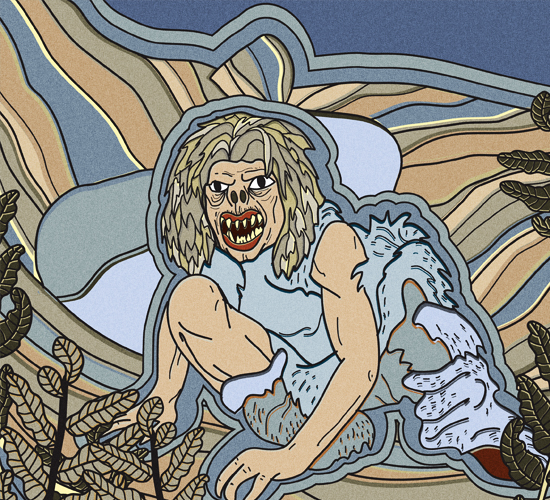
Appearance: Big and bad
Habitat: Caves and gorges in wild, rocky landscapes
Behaviour: May attack unwary travellers in remote areas. Generally avoids human habitation, but may steal valuable objects from houses. Throws rocks around, creating boulder fields and cairns. Also carves out strange holes in rocky outcrops (hiidenkirnut) thought by humans to be used by a hiisi to churn milk.
Relatives in other mythologies: trolls, giants, goblins
Tonttu

Appearance: Small, child-like. Most easily seen around Christmastime, often wearing a red tunic and a pointed red hat topped with a sleigh bell. Keeps a close eye on children before Christmas, and will report any misbehaviour to Santa Claus, with sorry consequences for kids expecting presents.
Habitat: Closely associated with human habitation, often a specific building such as a farmhouse, stable or sauna. Children must always behave respectfully in the sauna to avoid upsetting the Saunatonttu.
Behaviour: Usually invisible or discrete. Generally good-natured. Trusted by humans as the guardian spirits of their homes and buildings. Must be respected and provided with food (fond of porridge and soup).
Relatives in other mythologies: elves, pixies, leprechauns
Special thanks to Reeli Karimäki, University of Helsinki Dept. of Folklore Studies
By Fran Weaver



